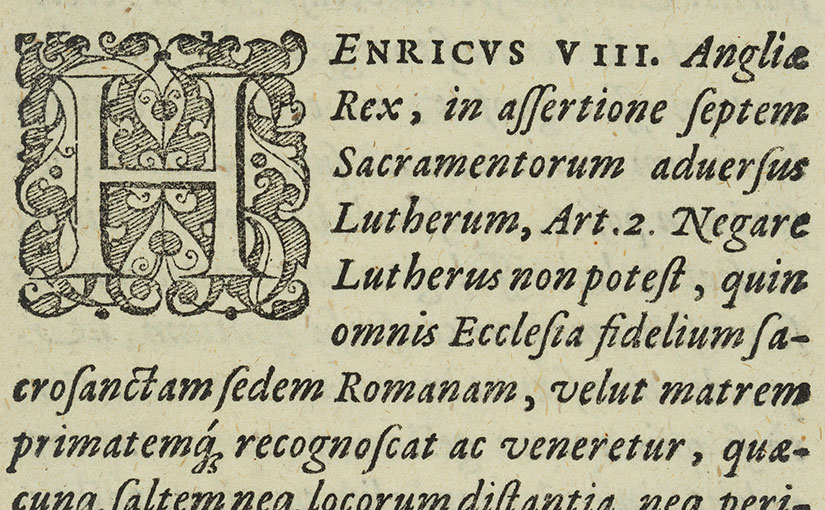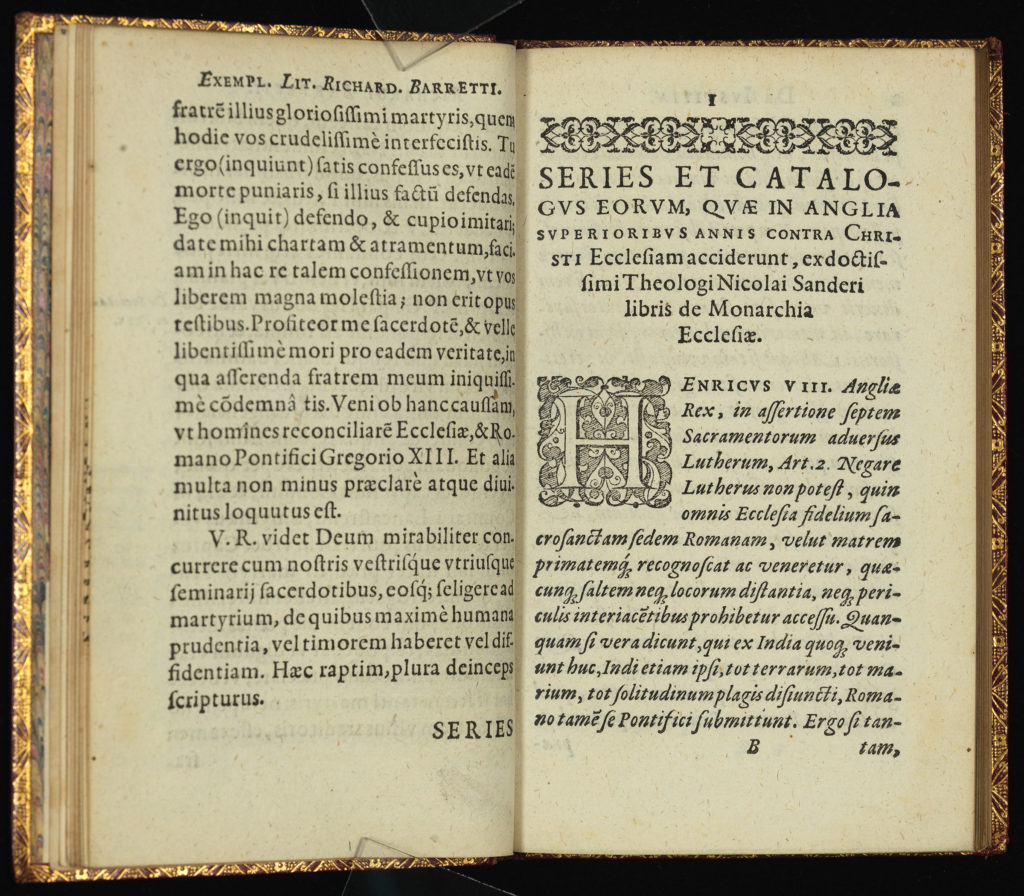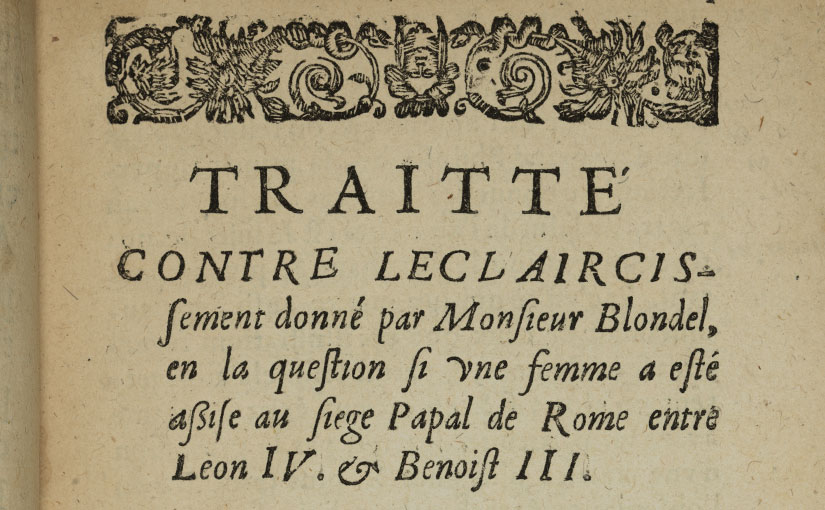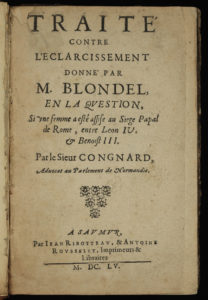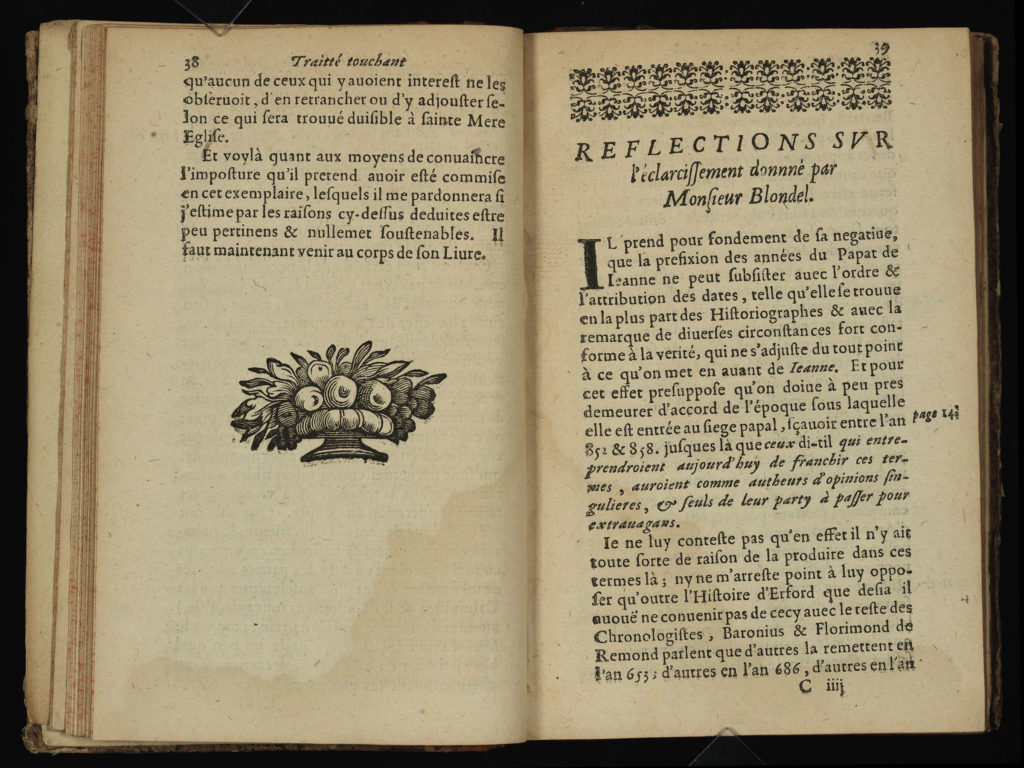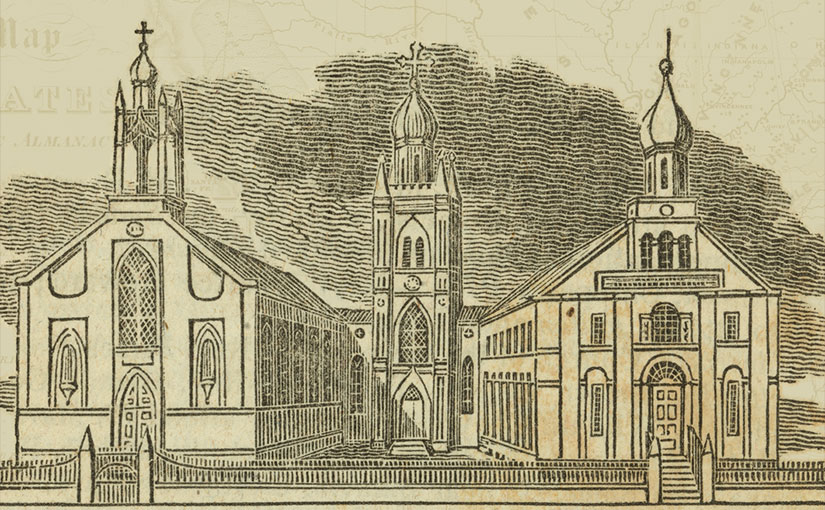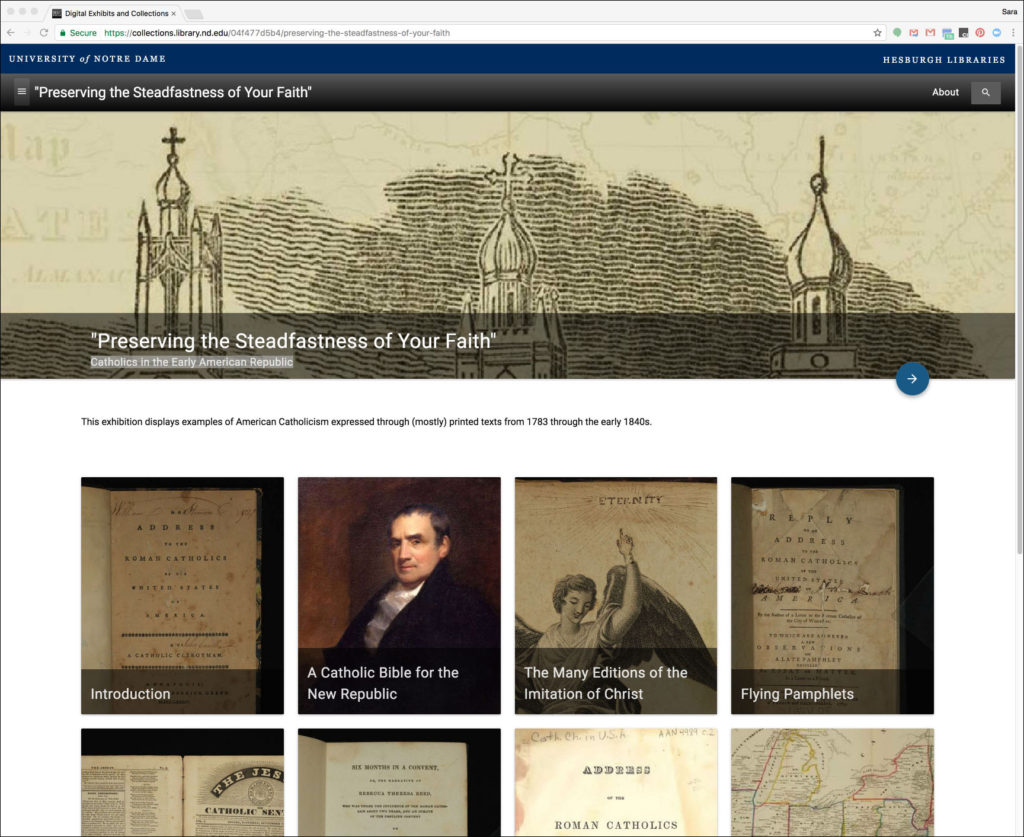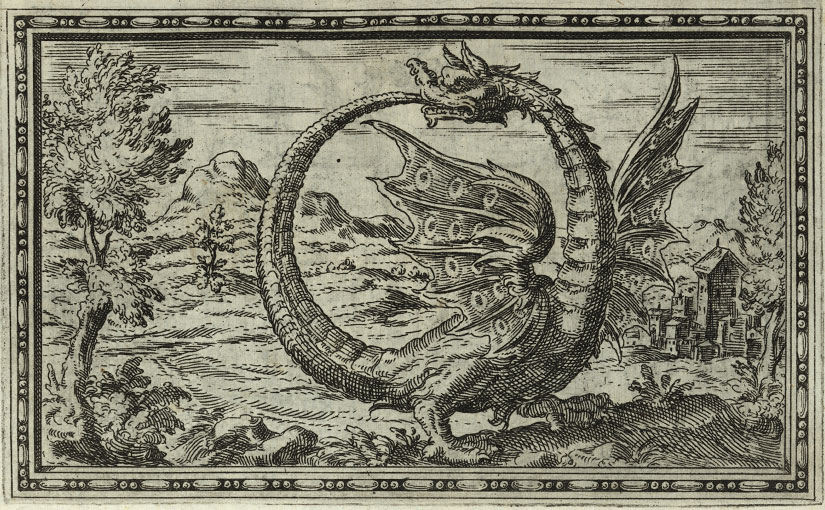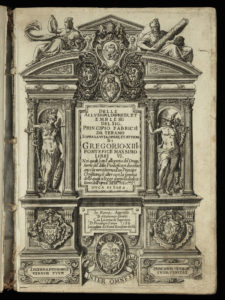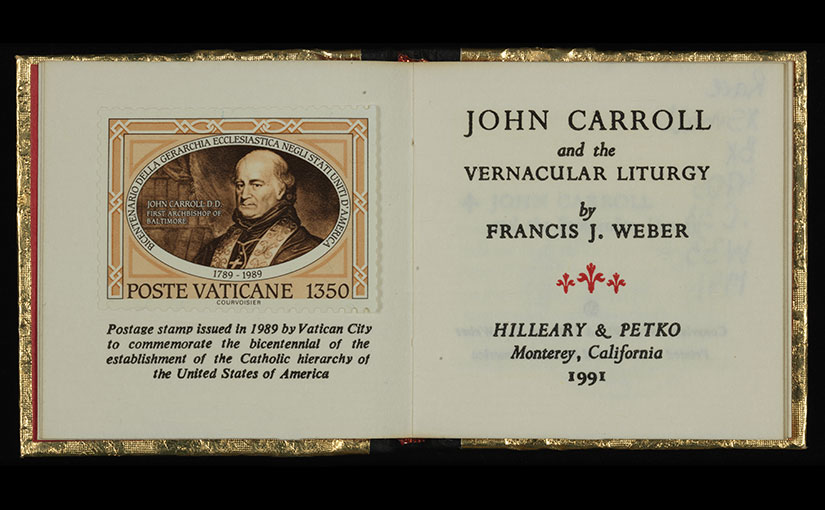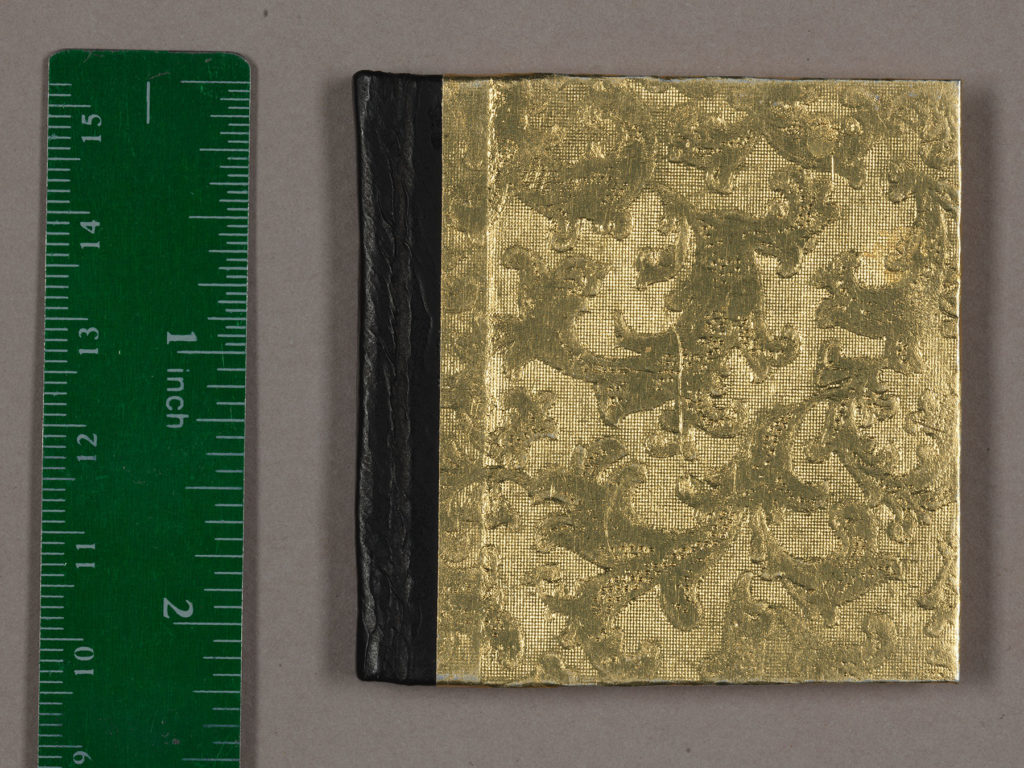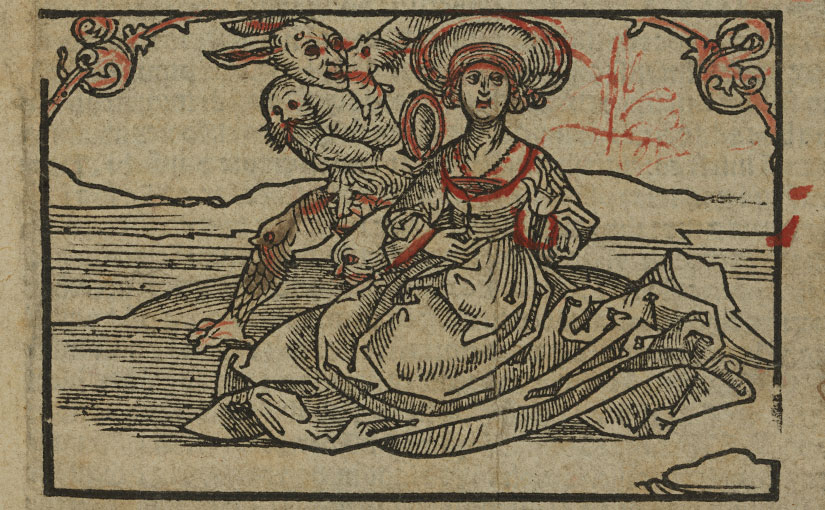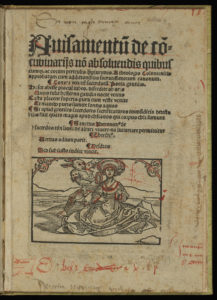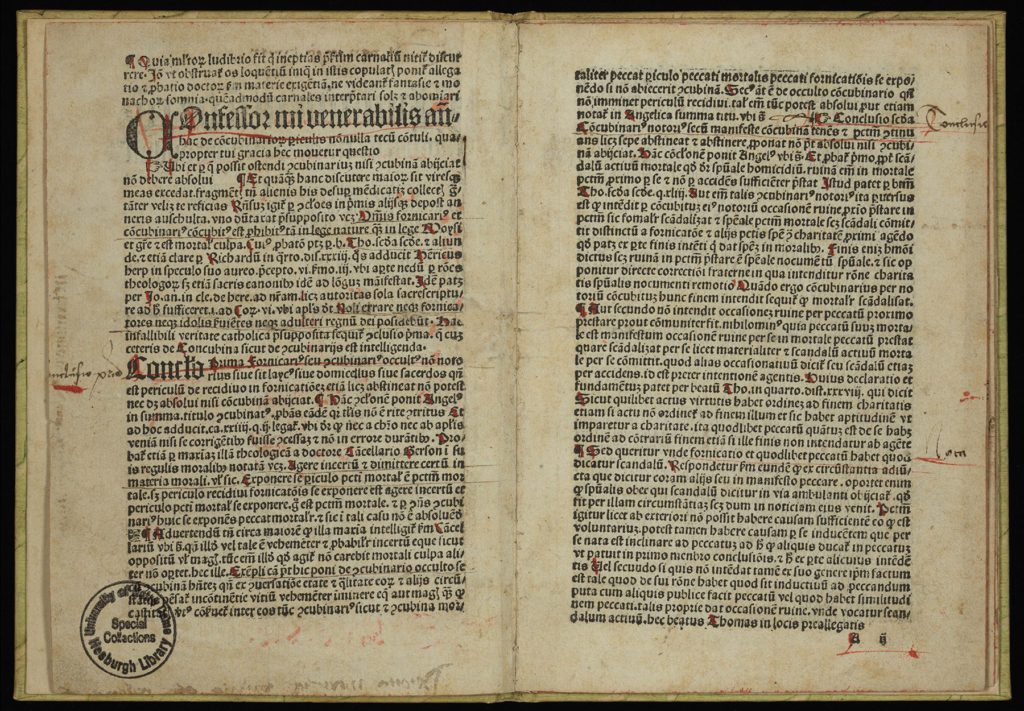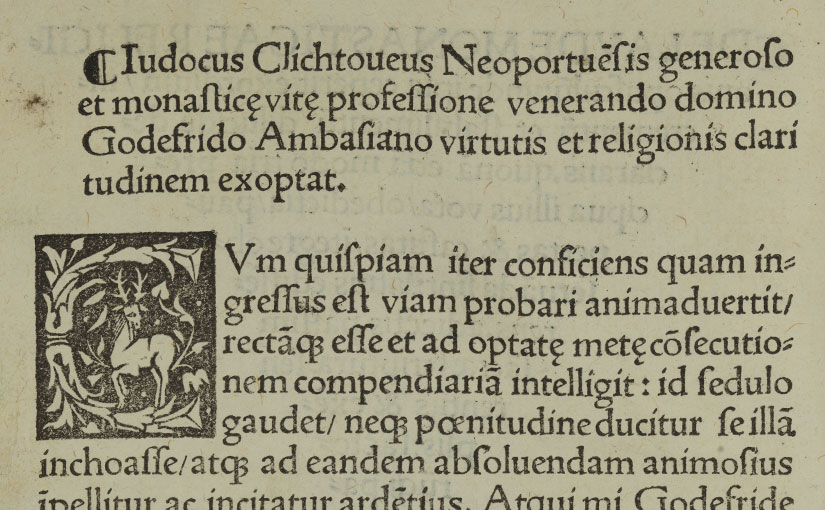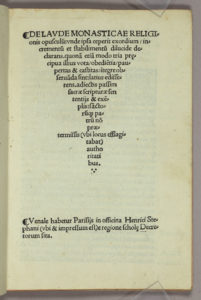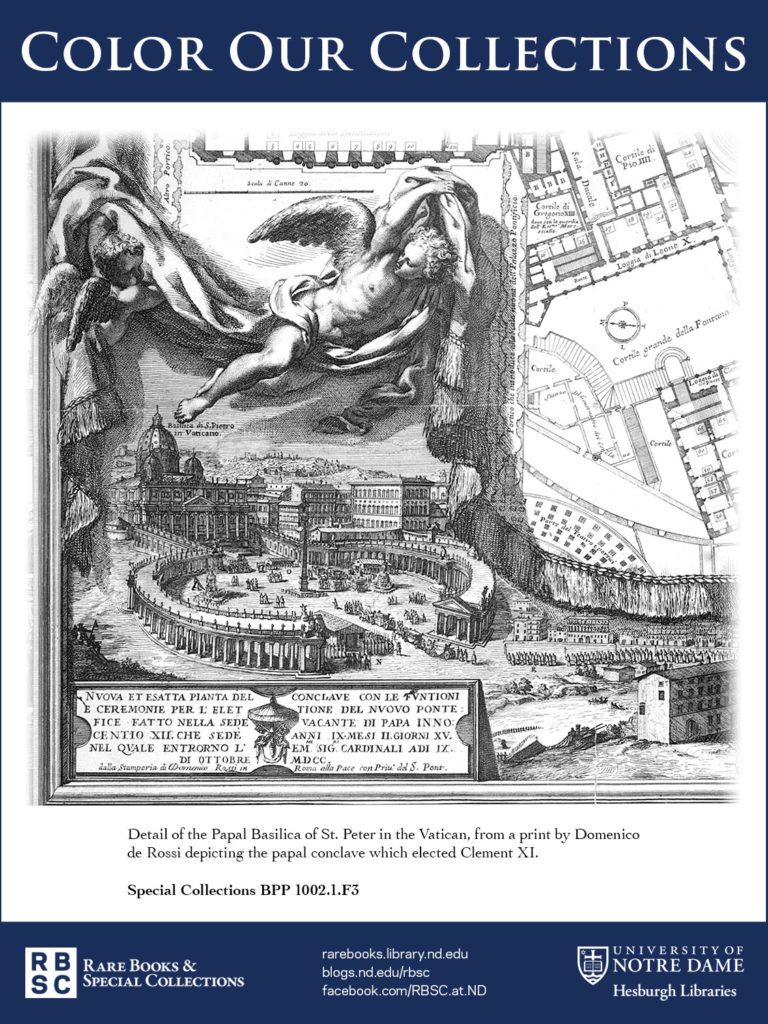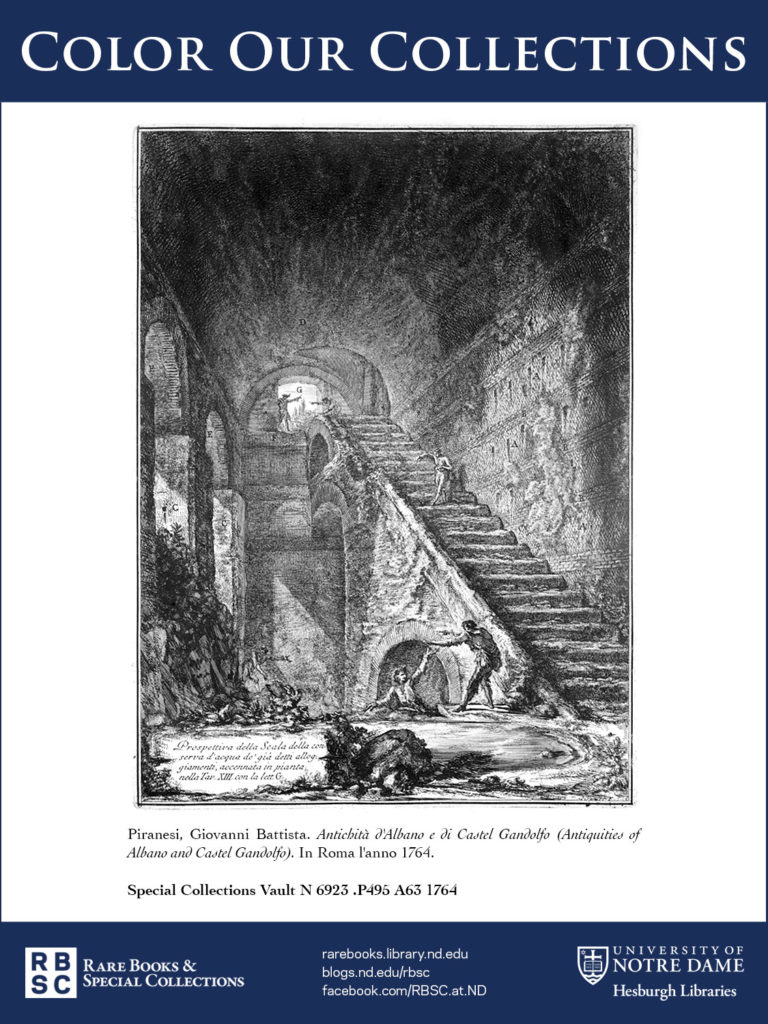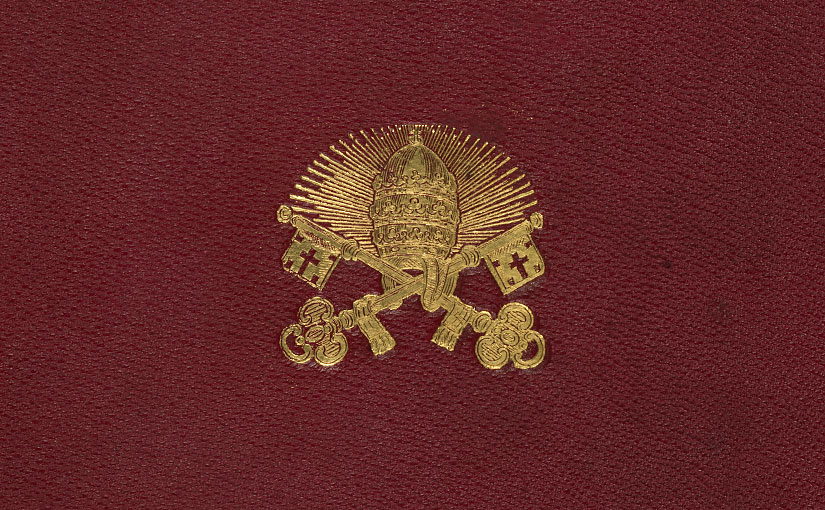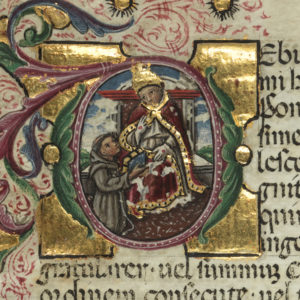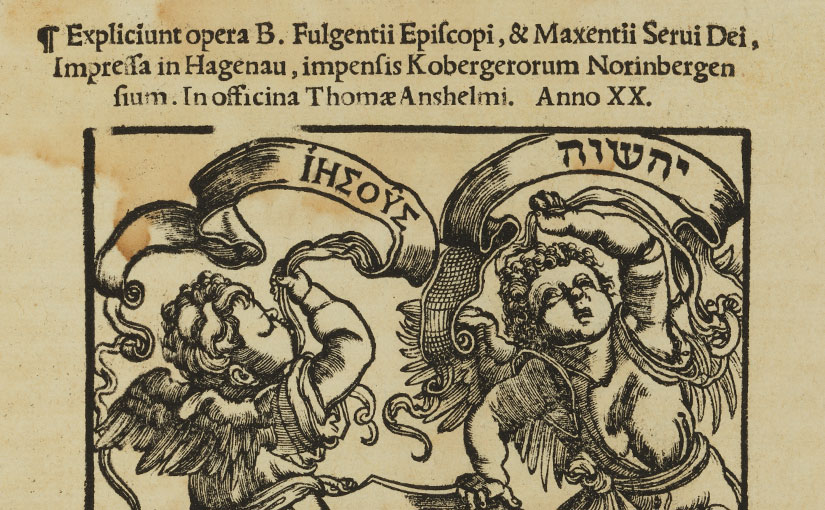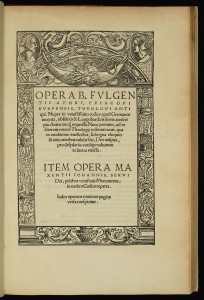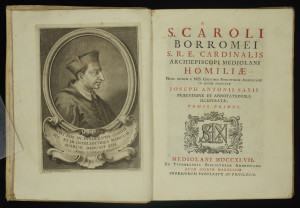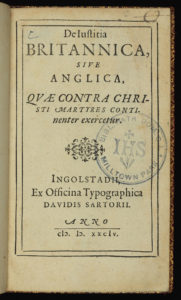 Hesburgh Libraries has recently acquired an interesting work from the Reformation period, De iustitia Britannica, siue Anglica, quae contra Christi martyres continenter exercetur (Ingolstadii, 1584).
Hesburgh Libraries has recently acquired an interesting work from the Reformation period, De iustitia Britannica, siue Anglica, quae contra Christi martyres continenter exercetur (Ingolstadii, 1584).
This title has been variously attributed to Cardinal William Allen, Robert Parsons and Nicholas Sander, but seems to actually be the work of an unidentified author who explicitly states that it is intended as a supplement to Allen’s A briefe historie of the martyrdom of xii priests (Rheims, 1582). The title clearly references—and is a response to—Iustitia Britannica (Londini,1584), the Latin translation of William Cecil Burghley’s The execution of justice in England, which defended the execution of Edmund Campion and other Catholics in 1581.
This acquisition is the first and only edition of the work; we have identified only six other North American holdings.
